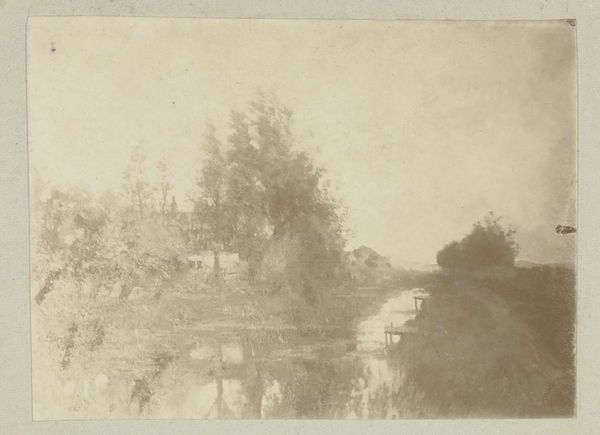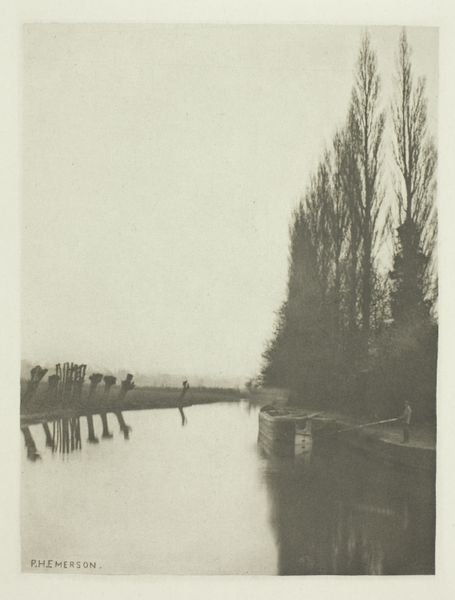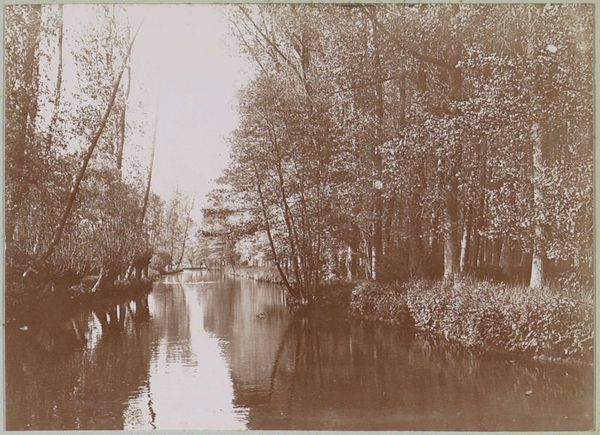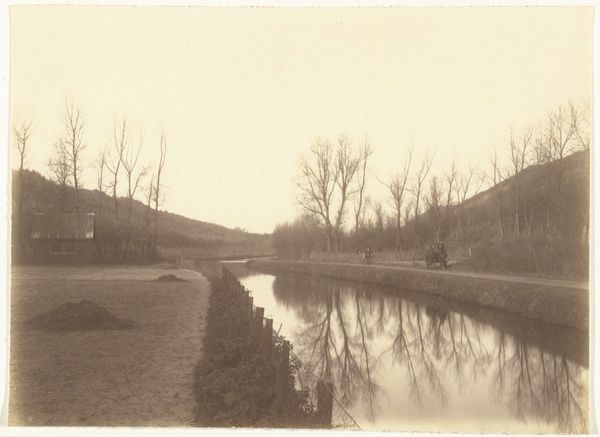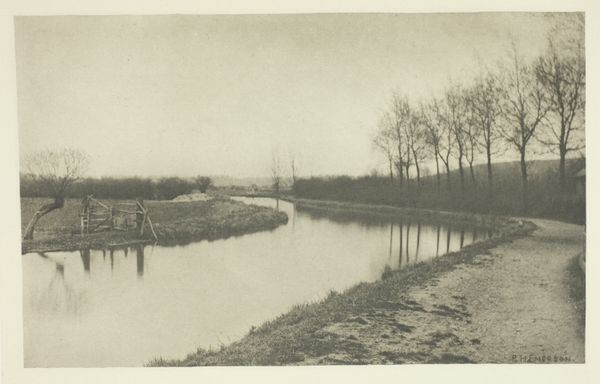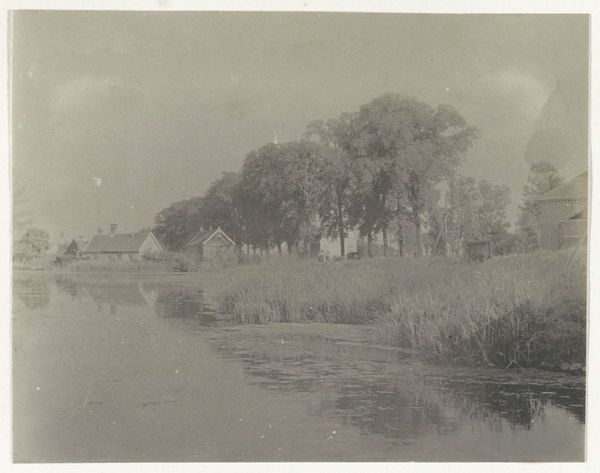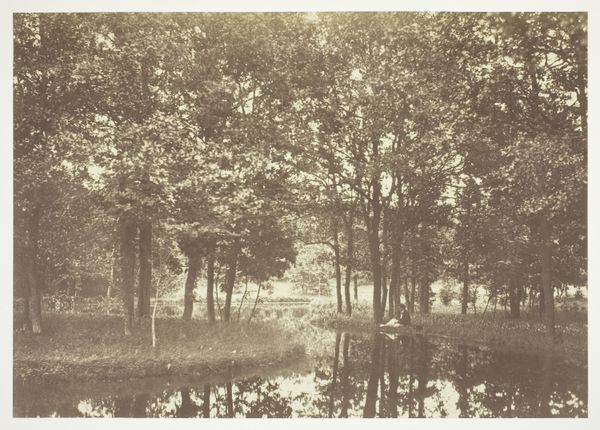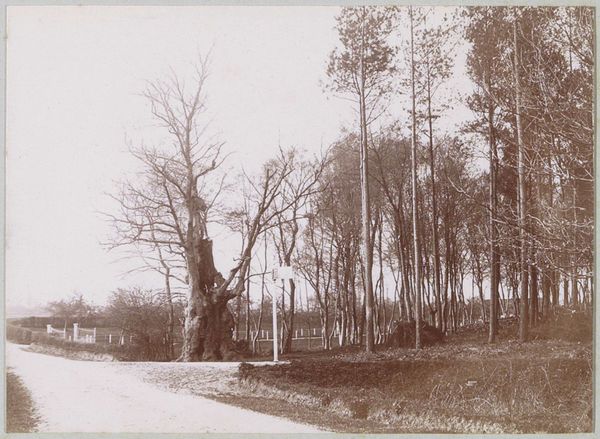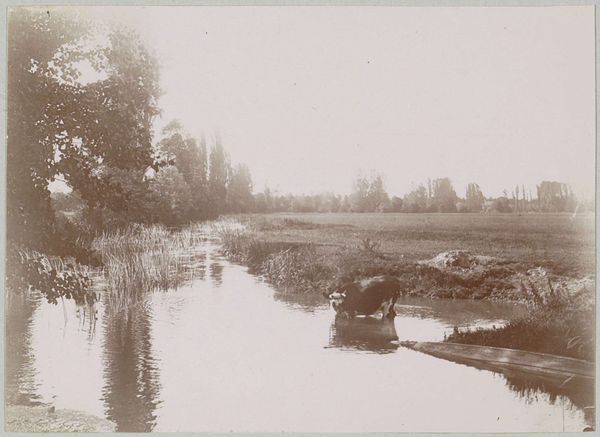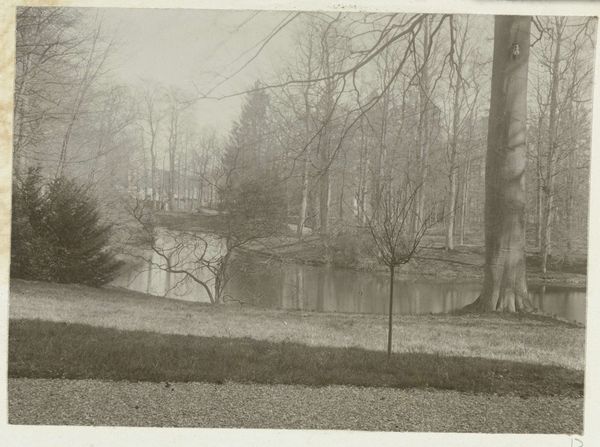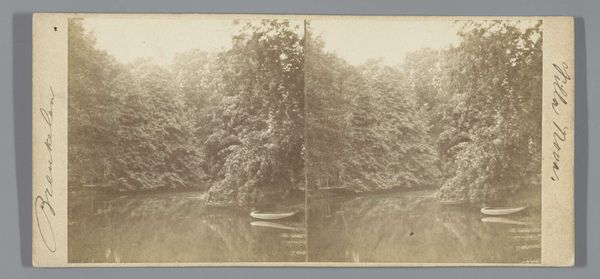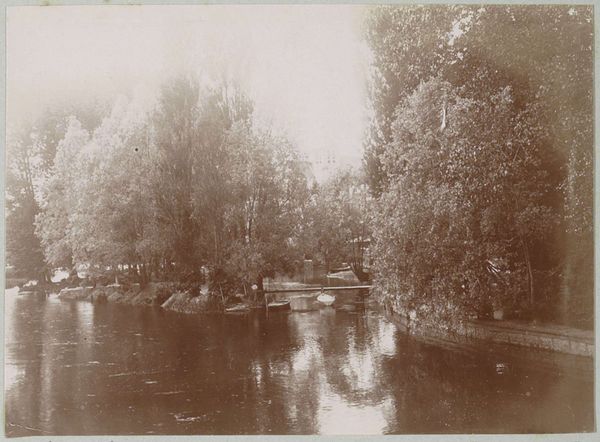
Dimensions: height 510 mm, width 353 mm
Copyright: Rijks Museum: Open Domain
Curator: Here we have "Boslandschap" – or "Woodland Landscape" – a photograph dating from circa 1860-1888, by Constant Alexandre Famin. It depicts a tranquil waterscape bordered by slender, bare trees. Editor: It has a somber, almost gothic, feel to it. The lack of leaves combined with the subdued tones makes me think of memento mori. Curator: Indeed. The artist likely chose this setting specifically for its melancholic associations. Bare trees in art are frequently symbolic of death or, at the very least, the passage of time and the coming of winter. These aren't just trees; they carry that cultural weight. Editor: I'm struck by how material this image feels. The way the water is rendered, it practically begs to be touched. The visible texture of the photographic paper or printing process enhances its physicality. Curator: Yes, the process involved would have been deliberate in its textural impact. But think about the deeper symbolic meaning: Water often signifies the subconscious, our innermost thoughts and feelings. Combined with those stark trees, we’re presented with quite a powerful duality. Editor: I wonder, though, about access to such scenes at this time? Consider who would have been able to acquire the equipment, the materials, to photograph such a seemingly remote place. There’s a cost of production to these melancholic reflections that’s also important to acknowledge. Curator: Precisely. Even seemingly simple landscape images are imbued with layered meanings and contexts that reflect the cultural and material conditions of their creation. Editor: Absolutely. It's rewarding to examine how this confluence of nature, image-making, and material existence ultimately impacts us today. Curator: A fitting synthesis. Let's move along and continue to question the surfaces we meet along the way.
Comments
No comments
Be the first to comment and join the conversation on the ultimate creative platform.
